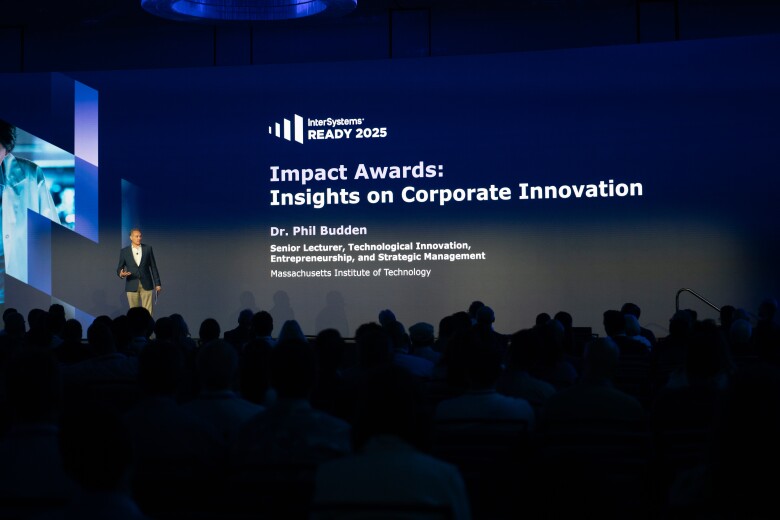This article first appeared in Business Computing Worldon Oct. 11, 2016, and is reposted here with permission.
“The biggest problem we face is re-shaping ourselves so that we’re better placed to change as rapidly as the world around us.” Wise words from Stephen Foreshew-Cain, executive director of the UK’s Government Digital Service, as he looked forward to the government of the future. The same holds true for business across all sectors.
Change is rapid and constant, and the traditional model of basing decisions on meticulously gathered and refined historical data is no longer fit for purpose. Looking over one’s shoulder is no way to make positive decisions; basing choices on information that is hours, days and event months old is the equivalent of driving through the rear-view mirror.
Equally, what lies ahead can never be known. Events such as Brexit show that nothing is certain, and organizations across the public and private sectors need to adapt quickly to move forward. Rapid access to data to drive decisions is essential, as is the ability to sense and respond to that data. And technology is emerging that will enable businesses to do just that, and change as the world changes.
Real-Time, Personalized Customer Care
Take retail, for example. The products you choose for your weekly shop provide data on your likes and dislikes, which in turn can inform the deals you are offered when you pay. In turn, this triggers the supply chain to order more of the products you want and have them in store in time for your next visit.
Maplin, a UK-based electronics retailer, is heading towards this reality with real-time sales analysis underpinned with powerful application integration technology. By moving data at pace and at scale, it will be able to deliver some of the best in personalized customer service that “clicks and mortar” can offer.
Such personalization also can benefit health. The mass of data held on a patient at a hospital can be used to recommend not just the correct treatment to a doctor, but also the right care package that ensures the patient stays out of hospital and enjoys a much greater quality of life.
With our genomes mapped, for example, and wearables linking to health records, we have the potential for personalized medicine that will revolutionize healthcare – but only if that data and decision support is placed in the hands of those delivering frontline care.
Even education can benefit. Just as we have our own genetic make up, we also have differing learning styles. Test results for individual students provide data that can indicate each person’s preferred style, and the teacher with the best approach to take for the students in front of them.
Biomarkers can provide an additional data source, for example, indicating when pupils with learning disabilities are becoming particularly stressed in the school environment. This can inform teaching and classroom approaches to help ensure that every child has their needs adequately addressed.
Inline Analytics Is Driving This Change
Inline, or active analytics, is the secret recipe that can enable this to happen. Inline analytics takes customer data from multiple, ever-expanding sources in real-time and, through rapid processing and analytics, and the use of algorithms, provides the frontline worker with the information they need to deliver excellent customer care.
This might be the customer at the register, the patient in the hospital, or the pupil in class; all can benefit from the tremendous insight that can be derived from this approach.
Inline analytics will enable businesses to react quickly to external events, either driven by the burgeoning body of data sources embodied in the Internet of Things, or through political events such as a vote that will engender large-scale political change.
Financial services companies worldwide, for example, will be able to change policies and tax planning in light of new policies that emerge from the UK’s intended exit from the European Union. Multiple data sources can be gathered, processed, and analyzed within seconds to enable quick decisions that can enhance competitive advantage.
Law enforcement bodies can use technology such as SmartWater, a forensic marking software provider, to identify criminal perpetrators as they are apprehended, drawing on its unique identification system that matches a unique marker on stolen property with that found on a potential criminal. This could be done instantly.
Step Change Required In Using Data At The Frontline
Such advances rely on technology that is currently available, including in-memory databases, high-performance technology, and highly parallelized processing. Multi-model, multi-workload data platforms also help realise the vision of real-time data-driven decision making. These support multiple transactions at the speed and scale organizations need.
It is not an easy process, but some businesses are already using these technologies to take the optimal approach to digital transformation. They are showing how to make the best use of big data. Vast data warehouses and decisions taken by a small body of people, based on historical data, will no longer provide the answers that businesses need to survive.
As Foreshew-Cain said, “new versions of the solutions to today’s problems are not the answer.” There needs to be a step change in how we use data to inform real-time decisions.
To make this happen, businesses have to put their customers, their patients, and their frontline staff at the center of their operations. Technology that empowers frontline staff, whether they are doctors, teachers, or sales assistant, can help organizations provide the best in personalized, customer care.
A future where automated decision making is based on the latest data provided from a myriad of sources will become the norm. And those data sources will expand massively as the Internet of Things takes hold for both businesses and citizens. Putting technology where it counts will provide the basis for the most successful organizations for years to come. Businesses need to act now to get the right tools in place to make that happen.




































